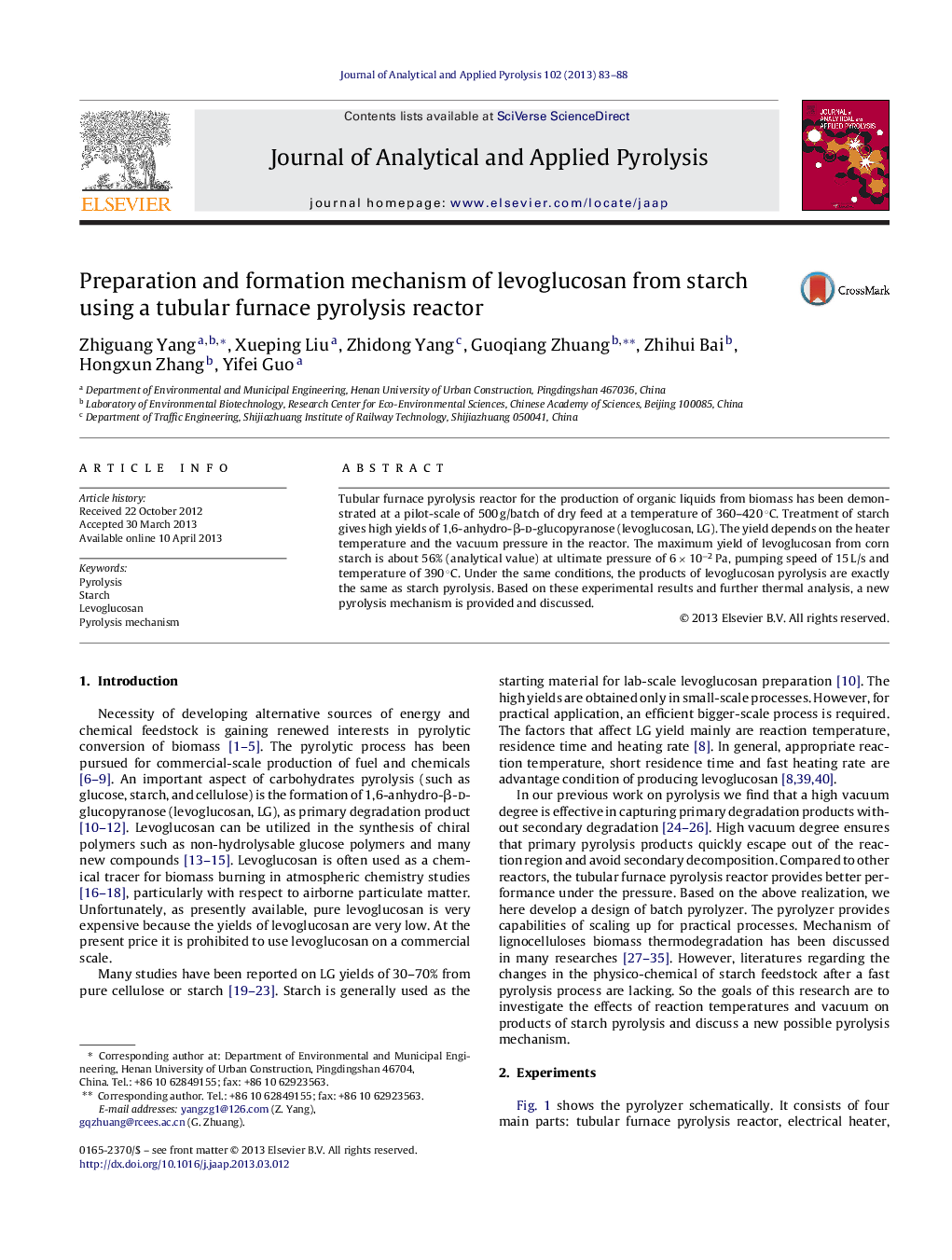| Article ID | Journal | Published Year | Pages | File Type |
|---|---|---|---|---|
| 1196891 | Journal of Analytical and Applied Pyrolysis | 2013 | 6 Pages |
•A tubular furnace pyrolysis reactor is designed.•A different pyrolysis mechanism from traditional Broido–Shafizadeh mode.•The pyrolysis reactant is not a simple mixture of initial feed and final char but a special intermediate residue.•Final char does not mainly caused by second-reaction of LG but by competitive reaction.•Levoglucosan and other volatiles are formed through competitive pyrolysis reactions rather than sequential pyrolysis reactions.
Tubular furnace pyrolysis reactor for the production of organic liquids from biomass has been demonstrated at a pilot-scale of 500 g/batch of dry feed at a temperature of 360–420 °C. Treatment of starch gives high yields of 1,6-anhydro-β-d-glucopyranose (levoglucosan, LG). The yield depends on the heater temperature and the vacuum pressure in the reactor. The maximum yield of levoglucosan from corn starch is about 56% (analytical value) at ultimate pressure of 6 × 10−2 Pa, pumping speed of 15 L/s and temperature of 390 °C. Under the same conditions, the products of levoglucosan pyrolysis are exactly the same as starch pyrolysis. Based on these experimental results and further thermal analysis, a new pyrolysis mechanism is provided and discussed.
